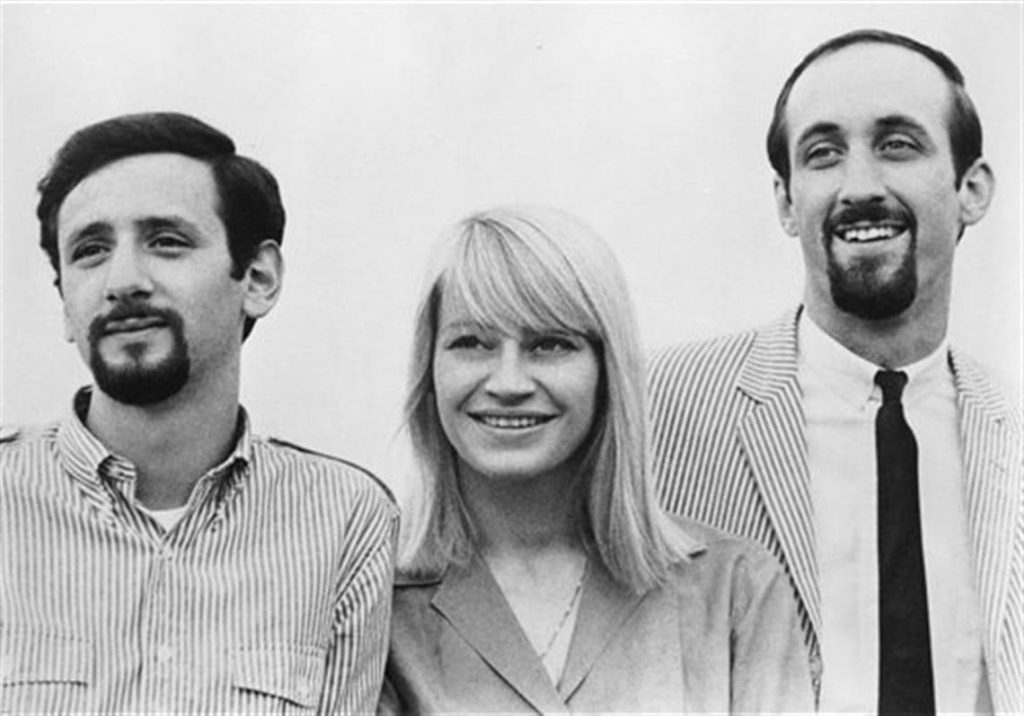
Peter, Paul & Mary – “Don’t Think Twice, It’s All Right”: A Folk Rendition of Resigned Heartache
Released in 1963 on the album In the Wind, Peter, Paul & Mary’s version of “Don’t Think Twice, It’s All Right” is a poignant interpretation of Bob Dylan’s song, capturing the nuanced emotions of love, disappointment, and acceptance. As one of the most influential folk groups of the 1960s, Peter Yarrow, Noel Paul Stookey, and Mary Travers brought their harmonious sound to this classic track, lending a sense of warmth and relatability to Dylan’s introspective lyrics. The song became a staple of their live performances and resonated deeply with audiences, embodying the folk revival movement’s blend of storytelling, simplicity, and emotional truth.
Originally written by Bob Dylan in 1962, “Don’t Think Twice, It’s All Right” is a farewell ballad, a tale of love lost and the process of moving on. While Dylan’s original version is tinged with cynicism and self-reflection, Peter, Paul & Mary’s rendition brings a gentler, more introspective tone to the song. The lyrics speak of letting go with lines like “I ain’t sayin’ you treated me unkind / You could have done better, but I don’t mind,” capturing the bittersweet nature of realizing that a relationship is over without bitterness or regret. This sense of acceptance, paired with the group’s rich harmonies, makes the song feel comforting rather than sorrowful, reflecting a compassionate take on separation.
Mary Travers’ clear, soulful voice brings a unique warmth and sincerity to the lyrics, and when combined with Yarrow and Stookey’s harmonies, the song takes on a choral quality that adds emotional depth. The trio’s voices blend seamlessly, creating a rich, layered sound that amplifies the reflective, philosophical nature of the song. Travers’ expressive delivery in particular lends a sense of empathy, making the song feel as though she’s sharing a personal story with the listener, which is a hallmark of Peter, Paul & Mary’s approach to folk music.
Musically, Peter, Paul & Mary stay true to the song’s folk roots, using acoustic guitars and gentle instrumentation to create a simple but impactful backdrop. The guitar picking pattern is soft yet deliberate, echoing Dylan’s original arrangement while allowing the group’s harmonies to take center stage. This musical simplicity is part of what makes their rendition so powerful; it allows the lyrics to shine and invites the listener to focus on the emotional message. There’s an intimacy in the arrangement that makes the song feel timeless, as if it’s a story passed down through generations.
The group’s version of “Don’t Think Twice, It’s All Right” resonated with the folk movement’s emphasis on authenticity, vulnerability, and connection. At a time when many people were questioning societal norms and exploring new avenues of self-expression, the song’s message of self-acceptance and resilience in the face of heartbreak struck a chord. Peter, Paul & Mary’s rendition reflected the ethos of the 1960s folk scene, which sought to bring honesty and humanity back into popular music, touching on universal themes like love, loss, and forgiveness.
What makes this rendition particularly memorable is how it softens Dylan’s slightly jaded tone, transforming the song into a more compassionate farewell. While Dylan’s original hints at a bitter self-defense, Peter, Paul & Mary’s take feels more like a gentle letting go, a hopeful acceptance of life’s natural ebbs and flows. This shift in tone highlights the emotional adaptability of the song and showcases Peter, Paul & Mary’s ability to make each song they covered uniquely their own.
In conclusion, Peter, Paul & Mary’s version of “Don’t Think Twice, It’s All Right” is a beautiful and introspective take on Dylan’s iconic track. Through their harmonious vocals, delicate instrumentation, and empathetic interpretation, they transform the song into a soothing ballad about love, acceptance, and moving forward. This rendition encapsulates the heart of the 1960s folk revival, bringing people together through shared experiences and universal truths. Decades later, the song remains a beloved classic, a reminder of the enduring power of folk music to touch hearts and heal through its honest reflection of the human experience.